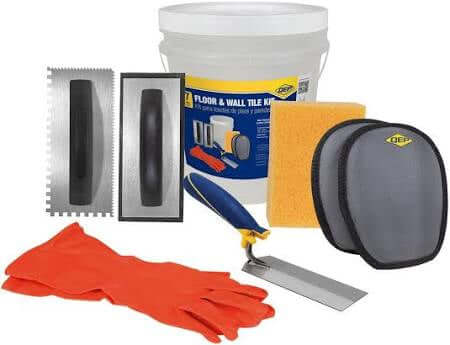
Taming the Tile: A Guide to Installation Difficulty and the Power of Grout
Share
Tiling a floor or wall can transform a space, adding beauty and functionality. But before you dive into a DIY project or hire a professional, understanding the installation challenges of different tile types is crucial. From delicate glass to rugged slate, each material presents its own set of hurdles. And let's not forget the unsung hero of tile installations: grout.
The Tile Installation Gauntlet: From Easiest to Most Challenging
-
Ceramic Tile:
- Generally considered the most DIY-friendly.
- Relatively easy to cut and handle.
- Consistent size and shape simplify the layout.
- Still, proper surface preparation and accurate leveling are essential.
-
Porcelain Tile:
- More dense and heavy than ceramic, requiring stronger tools and more muscle.
- Cutting porcelain requires a wet saw with a diamond blade.
- Precise leveling is crucial due to its hardness and potential for lippage (uneven tile edges).
- Professional installation is often recommended.
-
Limestone Tile:
- A natural stone, so variations in thickness and texture are common.
- Requires careful selection and blending of tiles for a uniform appearance.
- Porous nature necessitates sealing before and after grouting.
- Gentle cutting techniques are needed to avoid chipping.
-
Slate Tile:
- Highly textured and uneven surface, making leveling a challenge.
- Variations in thickness and size require meticulous planning and adjustment.
- Can be brittle and prone to breakage during cutting.
- Sealing is crucial to protect against staining and moisture.
-
Natural Stone (Granite, Marble, etc.):
- Wide range of hardness and porosity depending on the type.
- Requires specialized tools and techniques for cutting and polishing.
- High-end materials often warrant professional installation to prevent costly mistakes.
- Installation is very expensive.
-
Glass Tile:
- Extremely delicate and prone to chipping and scratching.
- Requires specialized thin-set mortar and precise cutting techniques.
- Transparent nature necessitates a perfectly smooth and clean substrate.
- Professional installation is highly recommended due to the difficulty.
The Unsung Hero: The Importance of Grout
Grout isn't just filler; it's a critical component of a successful tile installation.
- Structural Integrity: Grout provides lateral support, preventing tiles from shifting or cracking.
- Water Resistance: Grout fills the gaps between tiles, preventing water from seeping into the substrate.
- Aesthetics: Grout color and width can dramatically impact the overall look of the tile installation.
- Preventing Mold and Mildew: Properly sealed grout helps prevent the growth of mold and mildew, especially in wet areas.
Grout Considerations:
- Type: Choose the right grout type for your tile and application (e.g., sanded for wider joints, unsanded for narrow joints, epoxy for high-moisture areas).
- Color: Select a grout color that complements your tile and enhances the overall design.
- Sealing: Always seal grout after installation to protect it from stains and moisture.
Key Takeaways:
- Tile installation difficulty varies significantly depending on the material.
- Natural stone and glass tiles require specialized skills and tools.
- Grout plays a vital role in the structural integrity, water resistance, and aesthetics of a tile installation.
- Proper surface preparation is crucial for all tile types.
- When in doubt, it is best to hire a professional.
By understanding the challenges of different tile types and the importance of grout, you can ensure a beautiful and long-lasting tile installation.
